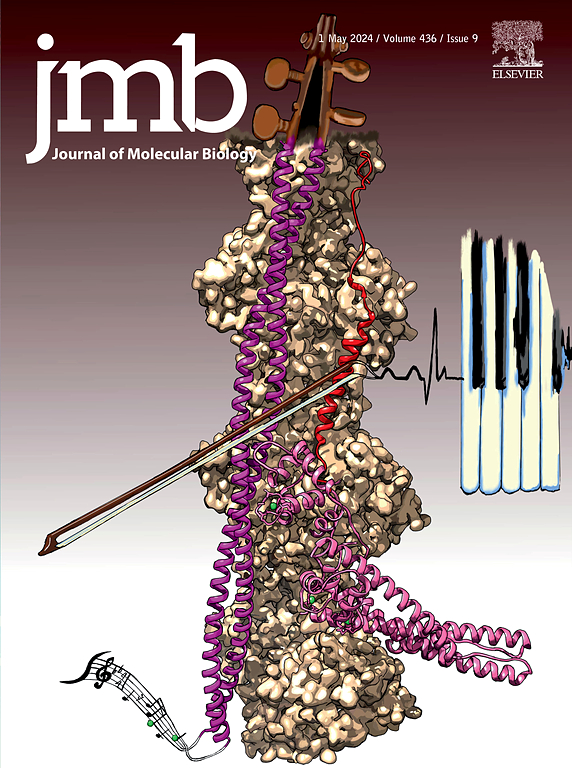自噬功能障碍和神经变性:哪里出了问题?
IF 4.5
2区 生物学
Q1 BIOCHEMISTRY & MOLECULAR BIOLOGY
引用次数: 0
摘要
神经退行性疾病的一个臭名昭著的标志是错误折叠或未折叠的蛋白质在大脑中形成包涵体的积累。这些异常结构的积累是一个神秘的原因,因为细胞投入了大量资源来整合互补途径,以确保蛋白质组的完整性和适当的蛋白质折叠。异常折叠的蛋白质物种会被泛素-蛋白酶体系统(UPS)迅速处理,即使这一过程失败,这些物种也会积累起来,细胞也可以依赖于溶酶体介导的自噬降解途径。尽管有许多保护措施,但在疾病发病期间或发病前,蛋白质稳态往往无法维持。在过去的15年里,研究表明自噬的失败可以解释疾病中观察到的蛋白质稳态的破坏。在这篇综述中,我们将研究大脑中高度复杂的细胞如何在自噬过程中的特定点容易受到聚集体清除失败的影响,从而导致神经退行性疾病大脑中的聚集体积累。本文章由计算机程序翻译,如有差异,请以英文原文为准。

Autophagy Dysfunction and Neurodegeneration: Where Does It Go Wrong?
An infamous hallmark of neurodegenerative diseases is the accumulation of misfolded or unfolded proteins forming inclusions in the brain. The accumulation of these abnormal structures is a mysterious one, given that cells devote significant resources to integrate complementary pathways to ensure proteome integrity and proper protein folding. Aberrantly folded protein species are rapidly targeted for disposal by the ubiquitin–proteasome system (UPS), and even if this should fail, and the species accumulates, the cell can also rely on the lysosome-mediated degradation pathways of autophagy. Despite the many safeguards in place, failure to maintain protein homeostasis commonly occurs during, or preceding, the onset of disease. Over the last decade and a half, studies suggest that the failure of autophagy may explain the disruption in protein homeostasis observed in disease. In this review, we will examine how the highly complex cells of the brain can become vulnerable to failure of aggregate clearance at specific points during the processive pathway of autophagy, contributing to aggregate accumulation in brains with neurodegenerative disease.
求助全文
通过发布文献求助,成功后即可免费获取论文全文。
去求助
来源期刊

Journal of Molecular Biology
生物-生化与分子生物学
CiteScore
11.30
自引率
1.80%
发文量
412
审稿时长
28 days
期刊介绍:
Journal of Molecular Biology (JMB) provides high quality, comprehensive and broad coverage in all areas of molecular biology. The journal publishes original scientific research papers that provide mechanistic and functional insights and report a significant advance to the field. The journal encourages the submission of multidisciplinary studies that use complementary experimental and computational approaches to address challenging biological questions.
Research areas include but are not limited to: Biomolecular interactions, signaling networks, systems biology; Cell cycle, cell growth, cell differentiation; Cell death, autophagy; Cell signaling and regulation; Chemical biology; Computational biology, in combination with experimental studies; DNA replication, repair, and recombination; Development, regenerative biology, mechanistic and functional studies of stem cells; Epigenetics, chromatin structure and function; Gene expression; Membrane processes, cell surface proteins and cell-cell interactions; Methodological advances, both experimental and theoretical, including databases; Microbiology, virology, and interactions with the host or environment; Microbiota mechanistic and functional studies; Nuclear organization; Post-translational modifications, proteomics; Processing and function of biologically important macromolecules and complexes; Molecular basis of disease; RNA processing, structure and functions of non-coding RNAs, transcription; Sorting, spatiotemporal organization, trafficking; Structural biology; Synthetic biology; Translation, protein folding, chaperones, protein degradation and quality control.
 求助内容:
求助内容: 应助结果提醒方式:
应助结果提醒方式:


